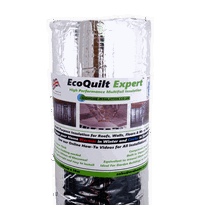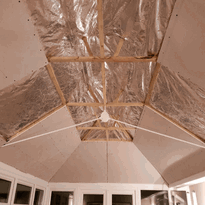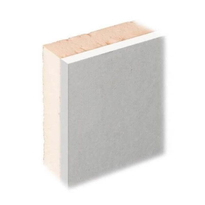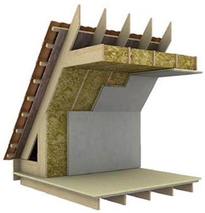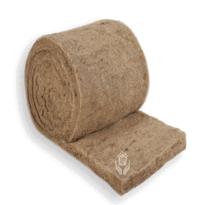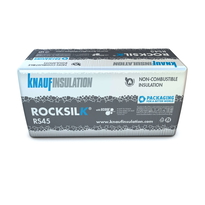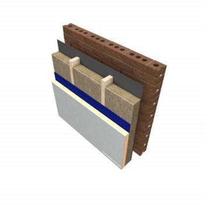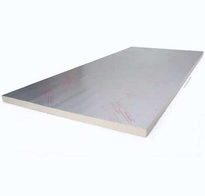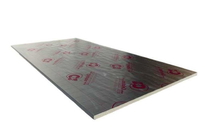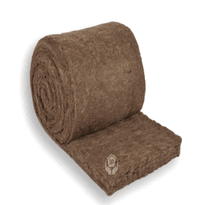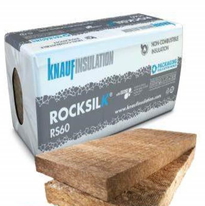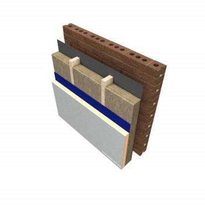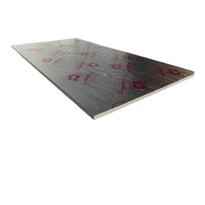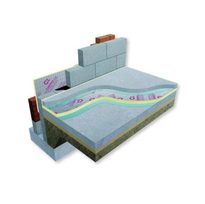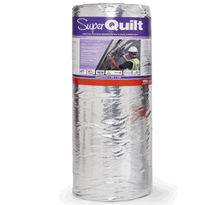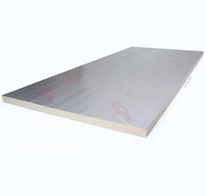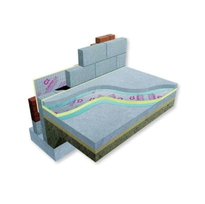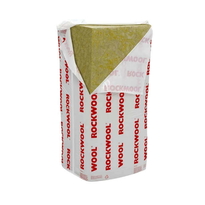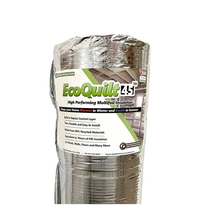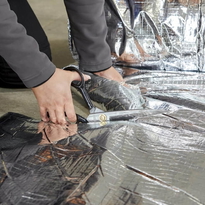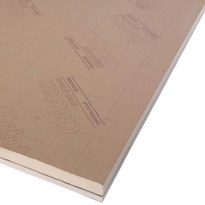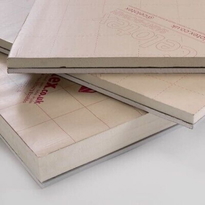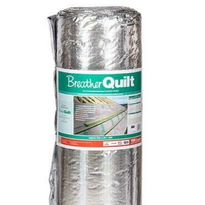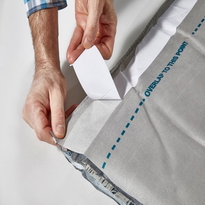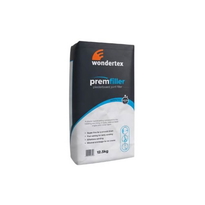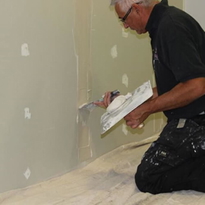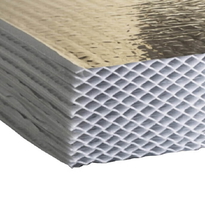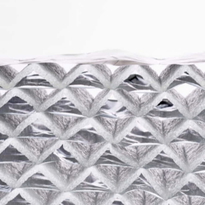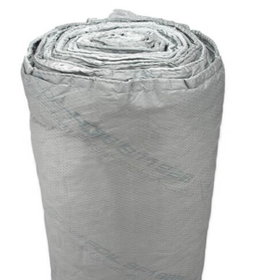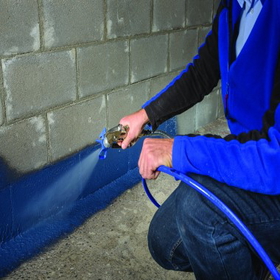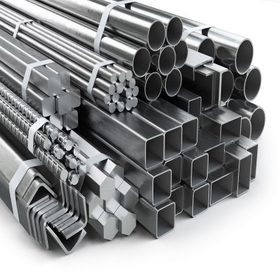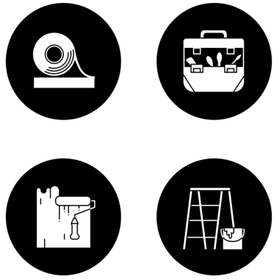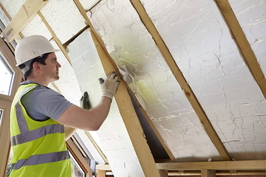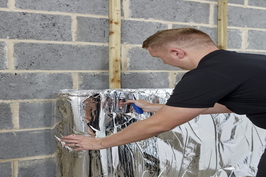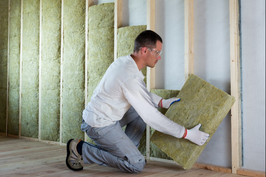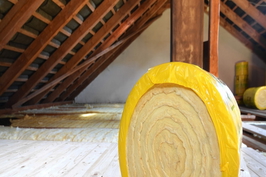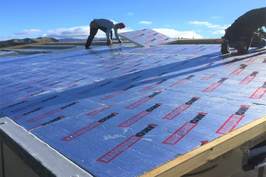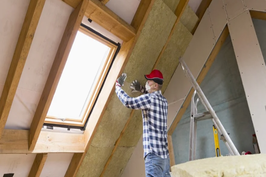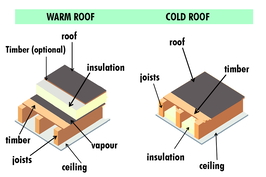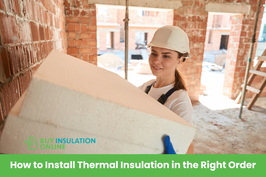Similar Categories
How to Choose the Best Warm Roof Insulation for Your Home
If you are looking for a way to improve the energy efficiency and comfort of your home, you may want to consider installing warm roof insulation. Warm roof insulation is applied above the roof deck, creating a continuous thermal barrier that prevents heat loss and gain through the roof. This can help you save money on your heating and cooling bills, reduce your carbon footprint, and enhance the appearance and durability of your roof.
But how do you choose the best warm roof insulation for your home? There are many factors to consider, such as the type of roof, the climate, the budget, and the performance requirements.
In this article, we will guide you through the process of selecting the right warm roof insulation for your needs. We will also introduce you to some of the products that we offer at Buy Insulation Online, a leading online retailer of insulation materials and accessories.
What is Warm Roof Insulation and How Does It Work?
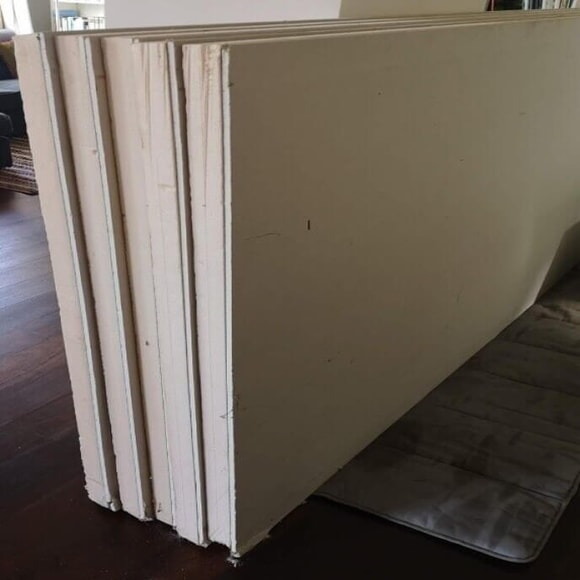 Warm roof insulation is a term that refers to a roof construction method where the insulation layer is placed above the roof deck, rather than below it. This means that the roof deck, the rafters, and the ceiling are all within the insulated envelope of the building, and are kept at a similar temperature as the living space below. This contrasts with cold roof insulation, where the insulation layer is placed between the rafters, leaving the roof deck and the rafters exposed to the external temperature.
Warm roof insulation is a term that refers to a roof construction method where the insulation layer is placed above the roof deck, rather than below it. This means that the roof deck, the rafters, and the ceiling are all within the insulated envelope of the building, and are kept at a similar temperature as the living space below. This contrasts with cold roof insulation, where the insulation layer is placed between the rafters, leaving the roof deck and the rafters exposed to the external temperature.
The main advantage of warm roof insulation is that it eliminates the risk of condensation and moisture damage to the roof structure, as well as the potential for thermal bridging and air leakage. Condensation occurs when warm, moist air meets a cold surface, such as the underside of a roof deck. This can lead to dampness, mould, rot, and corrosion, which can compromise the integrity and lifespan of the roof. Thermal bridging occurs when heat flows through a material or a gap that has a lower thermal resistance than the surrounding materials, such as the rafters or the joints between the roof deck and the walls. This can result in heat loss and cold spots, which can affect the thermal performance and comfort of the building. Air leakage occurs when air moves through gaps and cracks in the building envelope, carrying heat and moisture with it. This can also result in heat loss and condensation, increased energy consumption and noise transmission.
Warm roof insulation prevents these problems by creating a continuous and airtight thermal barrier that covers the entire roof area, including the eaves, the verges, and the ridge. This ensures that the roof structure is kept warm and dry and that the heat flow and air movement are minimized. Warm roof insulation also allows for more design flexibility, as it can accommodate different roof shapes, pitches, and finishes, without compromising the insulation performance.
What are the Different Types of Warm Roof Insulation?
There are many types of warm roof insulation available on the market, each with its own characteristics, advantages, and disadvantages. Some of the most common types are:
- Multifoil insulation: This is a type of insulation that consists of multiple layers of thin foil, usually aluminium, that reflect radiant heat and create air gaps that reduce heat conduction and convection. Multifoil insulation is lightweight, flexible, and easy to install, and can be used in combination with other types of insulation to boost the overall thermal performance. However, multifoil insulation has a relatively low thermal resistance per unit thickness, and may not meet the required U-values (a measure of heat transfer) on its own. Multifoil insulation also requires a vapour control layer to prevent condensation, and may not be suitable for some roof finishes, such as tiles or slates, that require ventilation.
- Rigid insulation boards: These are boards made of materials that have a high thermal resistance and a low thermal conductivity, such as polystyrene, polyisocyanurate, or phenolic foam. Rigid insulation boards are strong, durable, and resistant to moisture and fire, and can provide high levels of insulation with a minimal thickness. However, rigid insulation boards are relatively heavy, rigid, and expensive, and may require mechanical fixings or adhesives to secure them to the roof deck. Rigid insulation boards also need to be cut to fit the roof shape and size, which can create gaps and joints that need to be sealed to prevent thermal bridging and air leakage.
- Mineral wool insulation: This is a type of insulation that is made of fibres of rock or glass that are spun into a wool-like material. Mineral wool insulation is soft, flexible, and breathable, and can conform to the shape and size of the roof. Mineral wool insulation also has excellent acoustic and fire properties and can regulate moisture and prevent condensation. However, mineral wool insulation has a lower thermal resistance per unit thickness than rigid insulation boards and may require a greater depth to achieve the desired U-values. Mineral wool insulation also needs to be protected from wind uplift and water ingress and may sag or compress over time, reducing its effectiveness.
- Natural insulation: This is a type of insulation that is made of natural materials, such as sheep wool, hemp, or cellulose. Natural insulation is eco-friendly, renewable, and biodegradable, and can provide a healthy and comfortable indoor environment. Natural insulation also has good thermal and acoustic properties and can regulate moisture and prevent condensation. However, natural insulation may have a higher cost and a lower availability than synthetic insulation and may require special treatment to prevent pests, mould, and fire. Natural insulation also needs to be protected from wind uplift and water ingress and may degrade or settle over time, reducing its effectiveness.
How to Choose the Best Warm Roof Insulation for Your Home?
The best warm roof insulation for your home depends on several factors, such as:
- The type of roof: The type of roof that you have, such as flat, pitched, or curved, will affect the choice of warm roof insulation, as some types may be more suitable or compatible than others. For example, multifoil insulation may be more convenient for curved roofs, while rigid insulation boards may be more appropriate for flat roofs. The type of roof finish, such as tiles, slates, or metal, will also influence the choice of warm roof insulation, as some types may require ventilation or additional support.
- The climate: The climate that you live in, such as hot, cold, or humid, will affect the choice of warm roof insulation, as some types may perform better or worse than others. For example, rigid insulation boards may be more resistant to high temperatures and solar radiation, while mineral wool insulation may be more breathable and moisture-regulating. The climate will also determine the level of insulation that you need, as different regions have different U-value requirements and recommendations.
- The Budget: The budget that you have for your warm roof insulation project will affect the choice of warm roof insulation, as some types may be more expensive or cheaper than others. The cost of warm roof insulation depends on several factors, such as the material, the thickness, the quality, the installation, and the maintenance. You may want to compare the initial cost and the long-term savings of different types of warm roof insulation and choose the one that offers the best value for money.
- The performance requirements: The performance requirements that you have for your warm roof insulation will affect the choice of warm roof insulation, as some types may meet or exceed them better than others. The performance requirements may include the thermal, acoustic, fire, and environmental aspects of the insulation, as well as the durability, lifespan, and warranty. You may want to check the technical specifications and certifications of different types of warm roof insulation and choose the one that meets or exceeds the relevant standards and regulations.
What are the Products that We Offer at Buy Insulation Online?
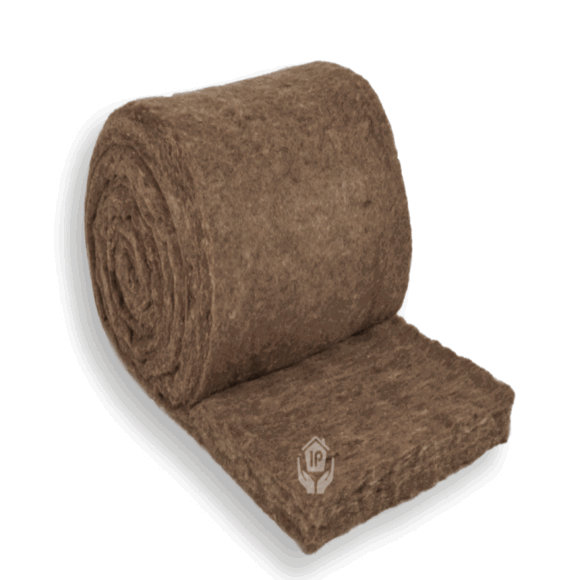 At Buy Insulation Online, we offer a wide range of warm roof insulation products that can suit your needs and preferences. Some of the products that we offer are:
At Buy Insulation Online, we offer a wide range of warm roof insulation products that can suit your needs and preferences. Some of the products that we offer are:
- EcoQuilt Expert Multifoil Insulation: This is a high-performance multifoil insulation that consists of six layers of reflective foil and wadding, creating a total thickness of 15mm. EcoQuilt Expert Multifoil Insulation can reflect up to 97% of radiant heat and can reduce the U-value of a roof by up to 1.61 W/m2K. EcoQuilt Expert Multifoil Insulation is lightweight, flexible, and easy to install, and can be used in combination with other types of insulation to boost the overall thermal performance. EcoQuilt Expert Multifoil Insulation also comes with a vapour control layer, a breather membrane, and a 10-year warranty.
- Knauf XPS Thermal Laminate Plus Insulated Plasterboard: This is a high-quality rigid insulation board that consists of a 9.5mm plasterboard bonded to a 20mm or 30mm extruded polystyrene foam. Knauf XPS Thermal Laminate Plus Insulated Plasterboard can provide a high level of insulation with a minimal thickness and can reduce the U-value of a roof by up to 0.25 W/m2K. Knauf XPS Thermal Laminate Plus Insulated Plasterboard is strong, durable, and resistant to moisture and fire, and can be easily fixed to the roof deck with mechanical fixings or adhesives.
- Knauf Rocksilk RS45 Rock Mineral Wool Acoustic and Thermal Insulation Slab: This is a high-density mineral wool insulation that consists of fibres of volcanic rock that are spun into a slab, creating a total thickness of 50mm, 75mm, or 100mm. Knauf Rocksilk RS45 Rock Mineral Wool Acoustic and Thermal Insulation Slab can provide excellent thermal and acoustic insulation and can reduce the U-value of a roof by up to 0.16 W/m2K. Knauf Rocksilk RS45 Rock Mineral Wool Acoustic and Thermal Insulation Slab is soft, flexible, and breathable, and can conform to the shape and size of the roof. Knauf Rocksilk RS45 Rock Mineral Wool Acoustic and Thermal Insulation Slab also has high fire resistance, a low environmental impact, and a 50-year warranty.
- Celotex GA4000 Aluminium Faced High-Performance PIR Insulation Board: This is a premium rigid insulation board that consists of a polyisocyanurate foam core with aluminium foil facings on both sides, creating a total thickness of 25mm, 50mm, 75mm, or 100mm. Celotex GA4000 Aluminium-Faced High Performance PIR Insulation Board can provide a very high level of insulation with a minimal thickness and can reduce the U-value of a roof by up to 0.18 W/m2K. Celotex GA4000 Aluminium Faced High Performance PIR Insulation Board is strong, durable, and resistant to moisture and fire, and can be easily fixed to the roof deck with mechanical fixings or adhesives. Celotex GA4000 Aluminium-Faced High-Performance PIR Insulation Board also has a low thermal conductivity, a low emissivity, and a 10-year warranty.
- SheepWool Insulation Optimal: This is a natural insulation that consists of 100% pure sheep wool that is treated with boron salts to prevent pests, mould, and fire, creating a total thickness of 50mm, 75mm, or 100mm. SheepWool Insulation Optimal can provide healthy and comfortable insulation and can reduce the U-value of a roof by up to 0.15 W/m2K. SheepWool Insulation Optimal is eco-friendly, renewable, and biodegradable, and can regulate moisture and prevent condensation. SheepWool Insulation Optimal also has good thermal and acoustic properties and can last for the lifetime of the building.
- Knauf Rocksilk Flexible Slab Mineral Wool Insulation: This is a low-density mineral wool insulation that consists of fibres of glass that are spun into a slab, creating a total thickness of 50mm, 75mm, or 100mm. Knauf Rocksilk Flexible Slab Mineral Wool Insulation can provide cost-effective and versatile insulation and can reduce the U-value of a roof by up to 0.16 W/m2K. Knauf Rocksilk Flexible Slab Mineral Wool Insulation is soft, flexible, and breathable, and can conform to the shape and size of the roof. Knauf Rocksilk Flexible Slab Mineral Wool Insulation also has good fire resistance, a low environmental impact, and a 50-year warranty.
How to Install Warm Roof Insulation?
The installation of warm roof insulation depends on the type of insulation, the type of roof, and the type of finish. However, some general steps that apply to most cases are:
- Prepare the roof deck: The roof deck is the base layer of the roof, usually made of wood, metal, or concrete. The roof deck should be clean, dry, level, and free of any defects, such as cracks, holes, or nails. The roof deck should also be strong enough to support the weight and the load of the insulation and the finish.
- Fix the insulation layer: The insulation layer is the main layer of the roof that provides the thermal barrier. The insulation layer should be fixed to the roof deck with the appropriate method, such as mechanical fixings, adhesives, or clips. The insulation layer should cover the entire roof area, including the eaves, the verges, and the ridge, and should be aligned and secured properly. The insulation layer should also be cut and fitted to the roof shape and size, and any gaps and joints should be sealed with tape, foam, or mastic to prevent thermal bridging and air leakage.
- Apply the vapour control layer: The vapour control layer is an optional layer of the roof that prevents the passage of water vapour from the inside to the outside of the building. The vapour control layer is usually a sheet of plastic or foil that is applied on top of the insulation layer and is taped or glued to the edges and the joints. The vapour control layer is recommended for some types of insulation, such as multifoil insulation, and some types of climates, such as humid or cold climates, to prevent condensation and moisture damage.
- Apply the breather membrane: The breather membrane is an optional layer of the roof that allows the passage of water vapour from the outside to the inside of the building while preventing the ingress of liquid water and wind. The breather membrane is usually a sheet of synthetic fabric or felt that is applied on top of the insulation layer and is nailed or stapled to the edges and the joints. The breather membrane is recommended for some types of insulation, such as mineral wool insulation, and some types of finishes, such as tiles or slates, to provide ventilation and protection.
- Apply the roof finish: The roof finish is the final layer of the roof that provides the aesthetic and functional aspects of the roof. The roof finish can be of various types, such as tiles, slates, metal, or green, and should be compatible with the type of insulation and the type of roof. The roof finish should be applied according to the manufacturer’s instructions and should be fixed and secured properly to the insulation layer or the roof deck. The roof finish should also be checked for any defects, such as cracks, gaps, or leaks, and should be maintained regularly.
Conclusion
Warm roof insulation is a great way to improve the energy efficiency and comfort of your home, as well as the appearance and durability of your roof. However, choosing the best warm roof insulation for your home can be a challenging task, as there are many factors to consider and many options to choose from.
That is why we at Buy Insulation Online are here to help you with our expert advice and our wide range of products. Whether you need multifoil insulation, rigid insulation boards, mineral wool insulation, or natural insulation, we have it all at the best prices and the best quality.
You can browse our website, Buy Insulation Online, to find out more about our products and services, or you can contact us to get a free quote and a free consultation. We are always happy to hear from you and to assist you with your warm roof insulation project.
Frequently Asked Questions
Q: What are the building regulations related to warm roof insulation?
A: Building regulations specify the minimum thermal performance requirements for roof insulation, as well as guidelines for ventilation, fire safety, and moisture control in roof constructions.
Q: How can I insulate a flat roof using warm roof insulation?
A: To insulate a flat roof with warm roof insulation, the insulation is typically installed above the roof deck and below the waterproof membrane, ensuring effective thermal performance and moisture protection.
Q: What are the high-performance insulation products for warm flat roofs?
A: High-performance insulation products for warm flat roofs include rigid insulation boards, spray foam insulation, and reflective foil insulation, offering excellent thermal resistance and moisture control.
Q: How does warm roof insulation impact energy bills?
A: Warm roof insulation can significantly reduce energy bills by minimizing heat loss and maintaining a comfortable indoor temperature, leading to long-term cost savings for heating and cooling.
Q: What is the best way to insulate a cold flat roof?
A: For insulating a cold flat roof, insulation is typically installed between the joists, allowing for air circulation and ventilation to prevent condensation and moisture issues in the roof construction.
